This ultra-low power, processing-efficient system enables OEMs to extend
battery life while designing in sophisticated, always-on sensing capabilities on
mobile devices. Advanced sensor algorithms such as voice triggering, motion
compensated heart rate monitoring, and indoor navigation can be achieved at
significant power reduction compared to competing MCU-based solutions.
Unlike traditional MCU-based solutions, the EOS S3 is a multi-core, sensor
processing system that enables sophisticated algorithm partitioning to facilitate the
lowest possible power consumption for the designated task.
The EOS S3 employs not only fundamental, but also very sophisticated, always-on,
context-aware sensing capabilities while staying well within the strict power
budgets of smartphone, wearable, and IoT designs.
Ultra-low power always on listening
Concurrent voice recognition and hub sensor processing
Customizable Hardware (eFPGA)
Customizable Software (OPEN Software)
2-mic beam-forming and noise-suppression
Dedicated uDSP (Flexible Fusion Engine™) for sensor processing
On/Off-body detection for lowest power mode
Low-Voltage (0.85 VDD) option for 33% power reduction
EOS S3 Sensor Processing Platform Block Diagram
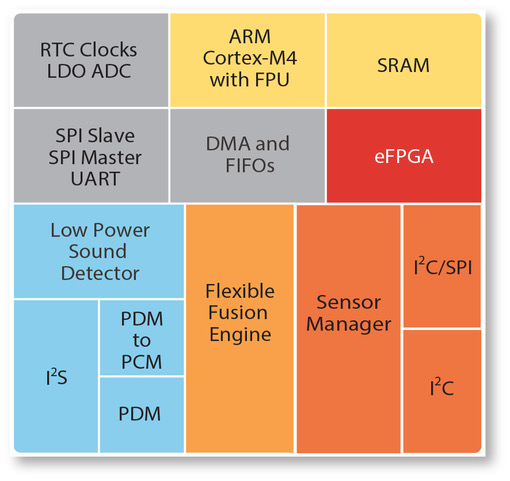
- Sensor Manager — Autonomously manages and controls all sensors
- Flexible Fusion Engine (FFE) — 10MHz DSP-like processor supports always-on computational processing at one forth the power
- eFPGA — Enables custom logic functions and I/O expansions
- Voice Processing — Hard-coded Low Power Sound Detector (LPSD) and PDM to PCM conversion minimizes audio processing power
- ARM Cortex-M4 with FPU — Up to 80MHz and 512 KB SRAM for general purpose processing and running O/S
- Serial I/O — SPI Master/Slave I2C, UART
- System — DMA, Integrate RTC Oscillators, ADC, LDO
Voice is the New Touch for Hearables
Hearable Diagram
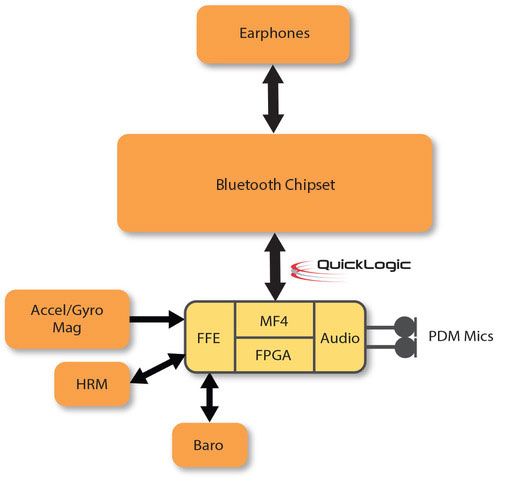
Challenge | Solution |
| As more functionality is enabled in a tiny hearable, delivering a long battery life is a challenge | Dedicated Low Power Sound Detection (LPSD) hardware to listen while rest of chip sleeps |
| Loud ambient noise | 80MHz M4F core to run 2-mic beam-forming noise suppression and leading-edge voice recognition solutions |
| High accuracy voice detection in noisy environments | OS S3 software package running leading-edge wake word engines |
| Preserving battery life while always listening for wake word phrase | Always-on Low-Power Sound Detection at 50uA (@Vbatt) |
| Fast Time-to-Market for consumer products | FreeRTOS open source reference design package |
Wearable Diagram
Wearable Diagram
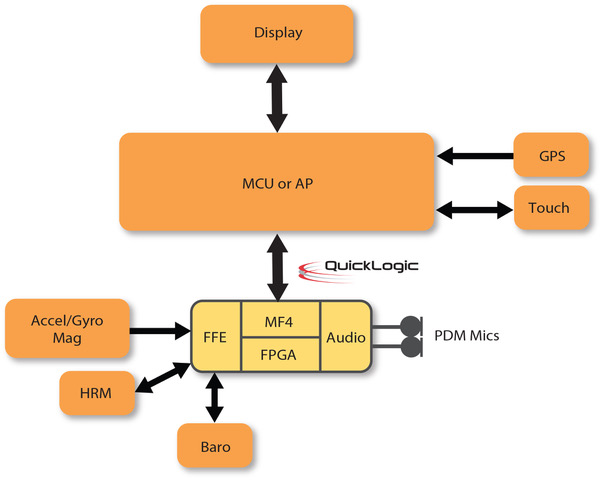
Challenge | Solution |
| Battery life is the #1 problem as small devices cannot accommodate a large battery and consumers want long battery life | Dedicated Low Power Sound Detection (LPSD) hardware listens while rest of chip sleeps, thus saving battery life |
| Using multiple different sensors, at varying samples rates | Dedicated uDSP (Flexible Fusion Engine) to autonomously manage multiple sensors at different data rates while M4 is idle |
Voice is the new UI (IoT SmartHome)
Typical IoT Device
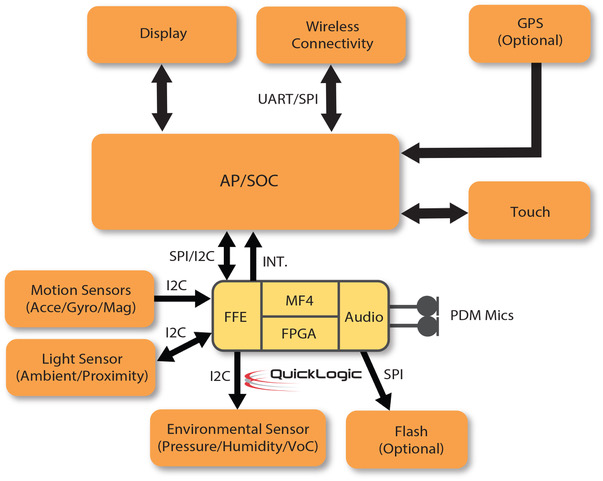
Challenge | Solution |
| Maximizing battery life of low-power IoT smart devices | Dedicated Low Power Sound Detection (LPSD) hardware to listen while rest of chip sleeps |
| Need voice control while playing music or sound | Barge-in AEC feature |
Smart TV & Home Appliance Diagram
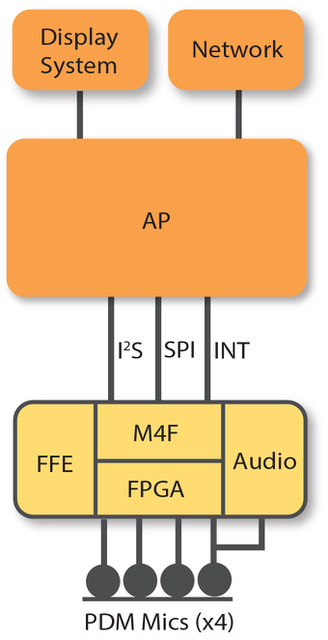
Challenge | Solution |
| Low standby power is required to meet national and international consumer product energy ratings | Dedicated Low Power Sound Detection (LPSD) hardware to listen while rest of chip sleeps |
| Convert PDM mic signals to I2S format for apps processor to run far-field voice recognition after being woken by S3 | eFPGA block allows for flexible hardware design |
EOS S3 Documentation |
|||||||||||||||||||
|---|---|---|---|---|---|---|---|---|---|---|---|---|---|---|---|---|---|---|---|
Datasheet |
|||||||||||||||||||
| Sensor Processing Datasheet | |||||||||||||||||||
Product Brief |
|||||||||||||||||||
| EOS S3 Product Brief | |||||||||||||||||||